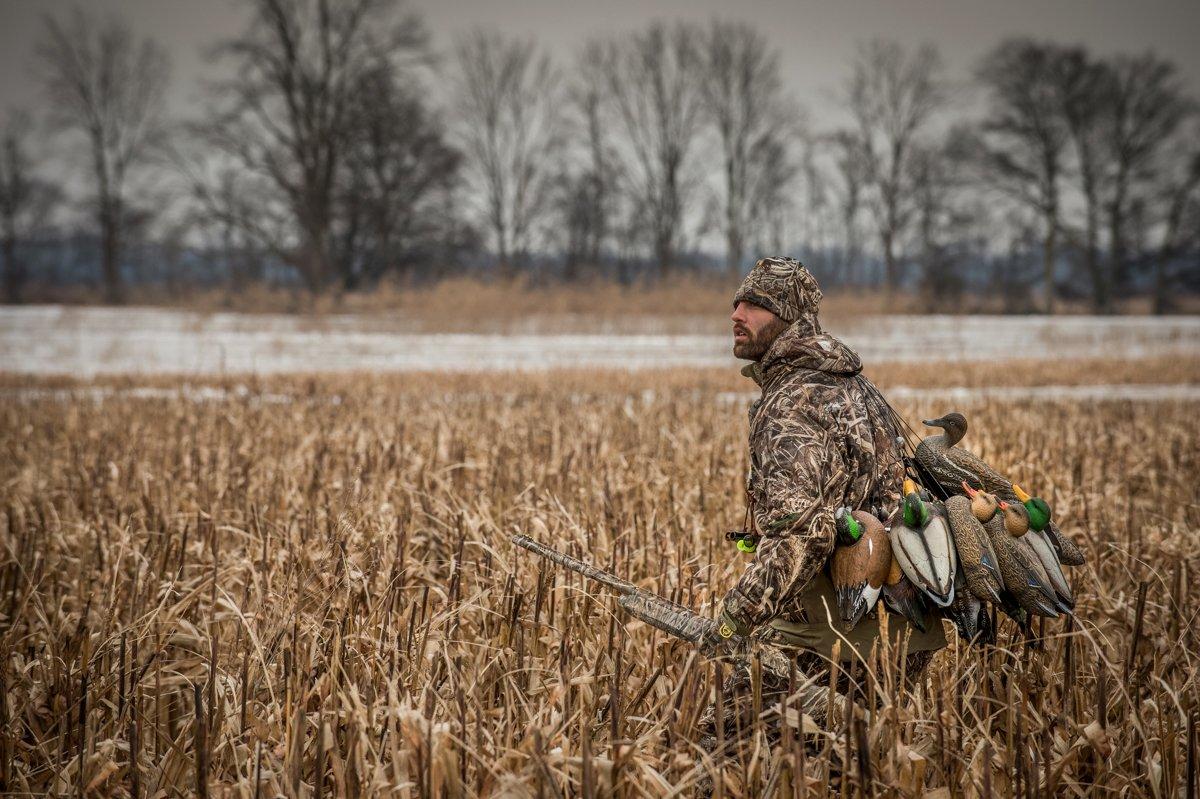Sometimes, Downright Silly Thinking Saves the Day
Waterfowl hunters love to discuss killer setups and ideal decoy spreads. But sometimes, those tried-and-true strategies fail. And occasionally, when conventional wisdom backfires, we only save the day by doing something crazy.
I've been there. After common, straightforward approaches bombed, I've thrown out the established playbook and tried something wild. Often, I end up chuckling at my folly or pray that nobody was watching. But now and then, those silly setups strike gold. Here are three examples of seemingly stupid strategies that worked.
Way Off the X
I knew where the wood ducks headed every morning: a tiny flooded pothole surrounded by red osier dogwood and other brush. The obvious setup, of course, was to hunker down 15 to 20 yards from the hole and shoot my limit the instant the ducks cupped their wings or circled over. Yet after two attempts, I had zero wood ducks. In fact, I hadn't fired a shot, as streamside timber and thick understory vegetation always obscured the ducks' approach. I'd tried to jump some woodies after they landed, but that resulted in a battle with waist-deep muck and birds flushing out of range as I cussed.
So I abandoned the dream pothole and found a comfortable place to sit about 75 yards upstream. At least some of the woodies came from the east every morning and followed the creek to the hole. By hiding near the wide, open stretch of water, I might at least pass-shoot a few as they zipped by. I didn't like the idea of adopting a spray-and-pray approach, but I resolved to see what would happen and take only quality shots.
And it worked. Actually, the woodies filed through in singles and pairs at treetop level, and I had a memorable shoot. In fact, I even made it to work early that day — minus the muck.
High-Plains Divers
Diving ducks associate with water — period. They don't walk well on land, and they even shy away from shorelines. Further, they typically fly over water when trading back and forth. So why would I pick up a lovely spread of bluebill and canvasback decoys on a loaded South Dakota slough to walk up a dry pasture hill?
To save the day, I guess. Several hundred redheads and a few ringnecks and buffleheads used the slough daily, but after being shot at a bit, they always landed in open water, far from my decoys. After the umpteenth fly-over one morning, I noticed that many of the ducks came from a large lake to the south and flew over a narrow gulch between two high prairie pasture hills on the way to my slough. "To heck with it," I thought. I collected the blocks and traipsed up the hill, dodging sun-baked cow pies.
Even my dog probably thought I was nuts, until the first group of ducks topped the rise and flew by at 35 yards. We quickly collected our two redheads and a bonus ringbill and called it a morning — with three big-water divers taken over a scrubby pasture 150 yards from water.
Backward at the Buzzer
My buddy Joe is pretty resourceful and never shies away from trying something new. Maybe that's why he's always cleaning ducks. That was never more evident than seven years ago, during the final day of a South Dakota trip.
A major cold front had pushed many birds out of our area, and Joe and our mutual buddy Jesse spent most of the day trying fruitless setups or searching for ducks. With 90 minutes of shooting light left, they found a nice wad of gadwall and wigeon using a large public area. However, the ducks seemed spooky and wanted to land near the windswept southern shoreline instead of — as conventional wisdom would dictate — the protected lee shore.
No matter. Joe had no time to waste, so he set up backward, tossing a few decoys in the rough water on the windward shoreline. Then, he turned and faced away from his decoys, waiting for ducks to top a nearby rise and work into the wind toward his rig.
Sixty minutes later, he and Jesse were walking out with full straps. They'd done everything backward yet had pulled off an epic last-chance prairie hunt.
Backward Takeaways
The moral to these stories, of course, is that waterfowlers should remain observant and try new, possibly crazy approaches when common sense sputters. Goofy setups won't always work, but even attempting an offbeat approach is better than failing with a standard strategy.
Click here for more Realtree waterfowl hunting content. And check us out on Facebook.











